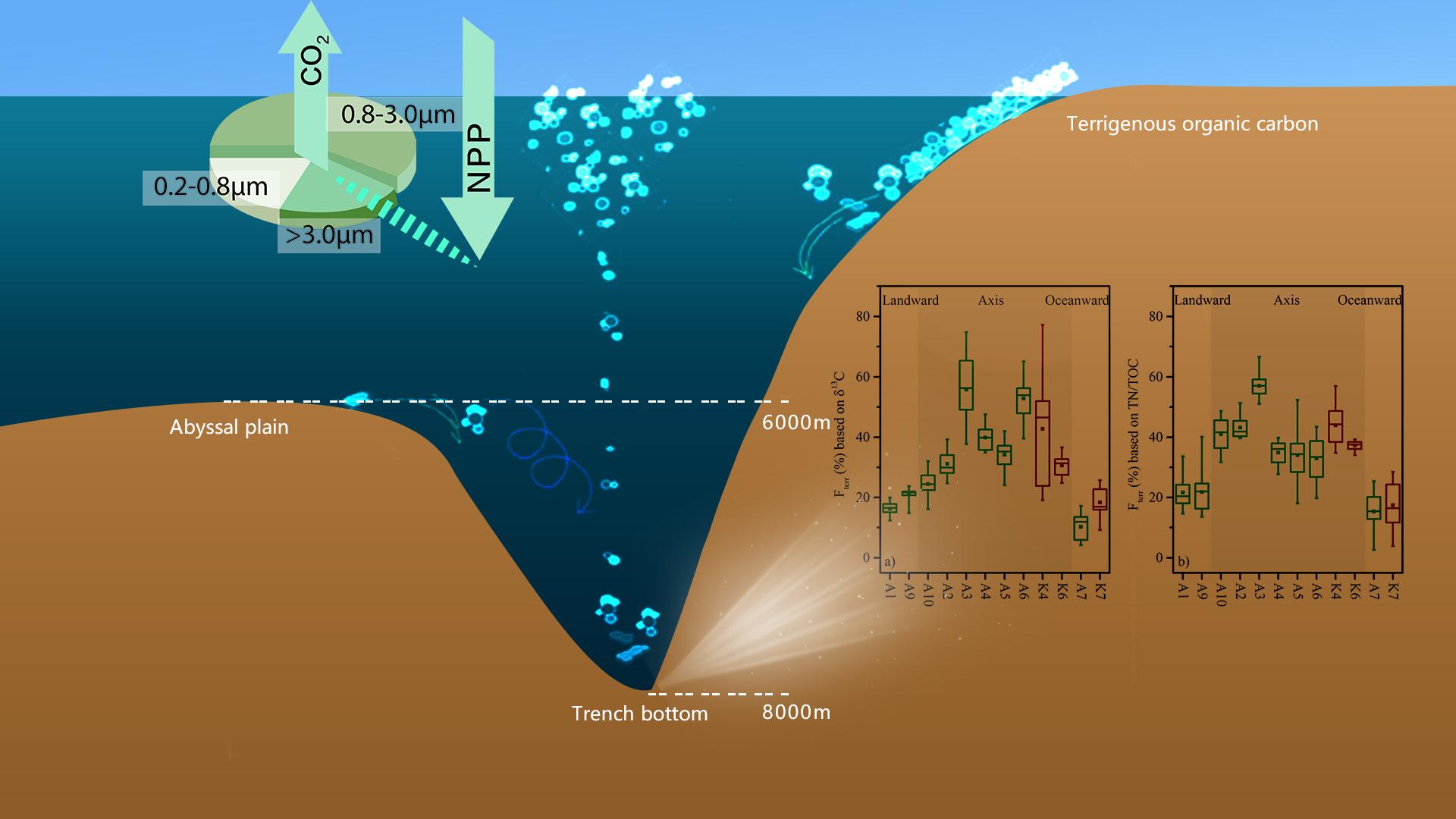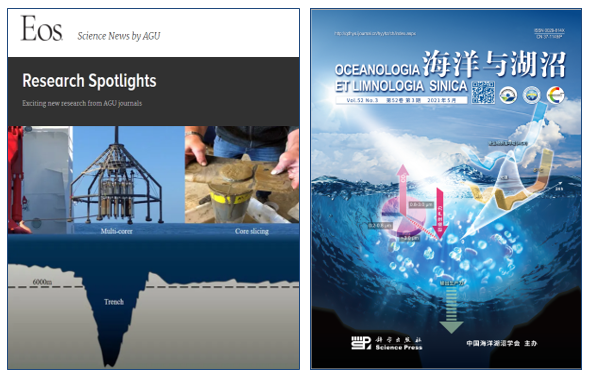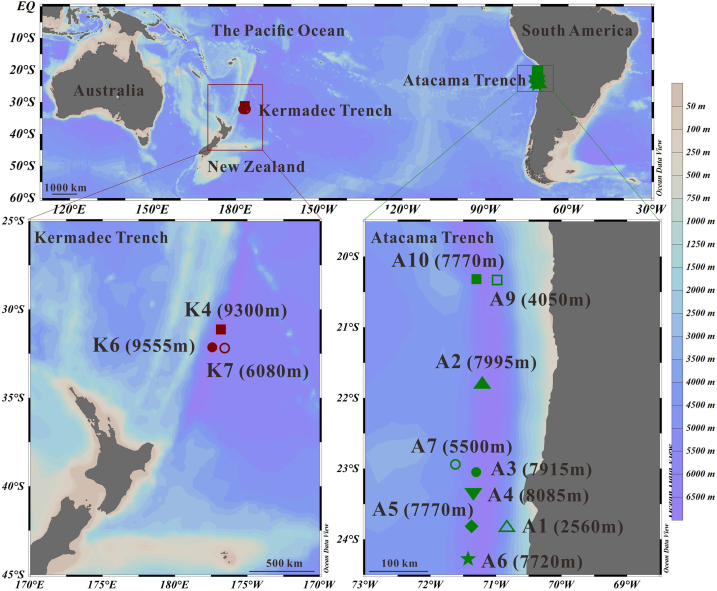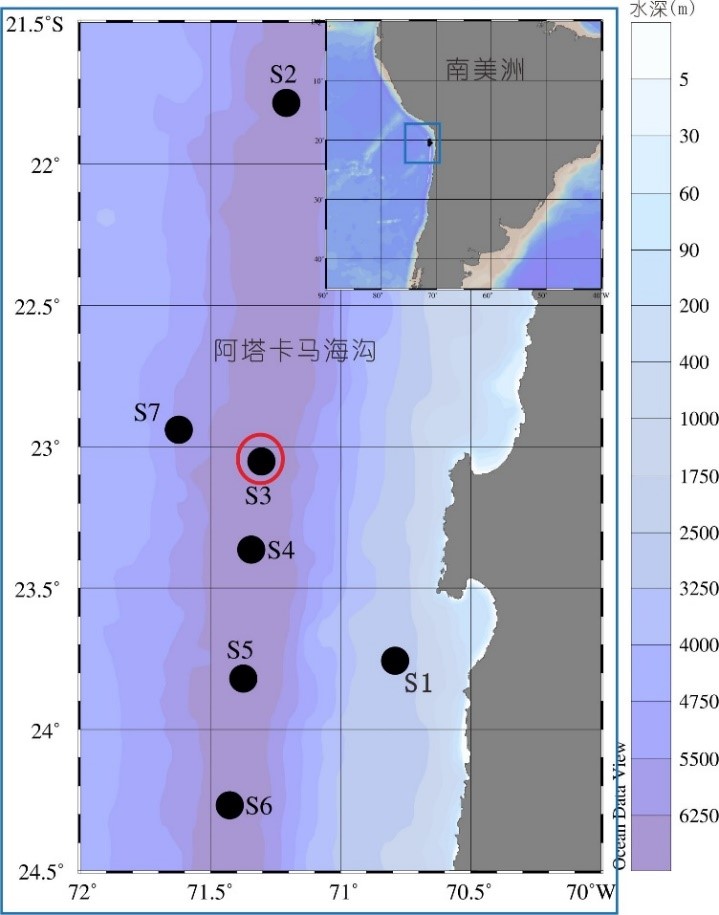Hadal trenches are the deepest regions of the ocean. They are located at the subduction zone of the plate tectonic systems. Biogeochemical cycling studies of this extreme environment could help us further understand the global ocean’s material and energy transfer.

Recently, the team of Dr. Xinxin Li from the Department of Ocean Science and Engineering (OSE) at the Southern University of Science and Technology (SUSTech) teamed up with several institutes around the world and made new progress in the chemical oceanography study of the hadal trenches, revealing the source of organic carbon in the 8000m hadal trench sediments.
Their results have been published in Journal Geophysical Research: Biogeosciences (JGRB) and Oceanologia et Limnlolgia Sinica. The first paper in JGRB was entitled “Distribution, source, and burial of sedimentary organic carbon in Kermadec and Atacama Trenches,” was reported as “Research Spotlight” by the weekly magazine Eos science news of the American Geophysical Union (AGU). The second paper published in Oceanologia et Limnlolgia Sinica was entitled “Temporal and spatial distribution of particulate organic carbon and microbial community respiration of Atacama trench surface water, Chile.” It was also selected as the front cover of the journal.

Primary production is the ability of the primary producer to generate organic carbon through photosynthesis in the euphotic zone of the ocean, which supports the entire marine ecosystem. However, the relationship between the biogeochemical process in the upper water and the hadal trenches (>6000m) is still unclear. The development of science and technology has improved the pressure resistance of ocean instrumentation, allowing scientists to collect samples and study the deepest part of the ocean.
The research teams collected 12 sediment cores from the Atacama Trench in the Southeast Pacific and the Kermadec Trench in the Southwest Pacific (Figure 1) and analyzed biogeochemical parameters of organic carbon. The results showed the heterogeneity of OC distribution between trenched and within each trench. Overall, the distribution of marine organic carbon in trench sediments was closely related to primary productivity from the surface water, while the terrestrial organic carbon content of the sediments in the axis of the two trenches was 18% and 24% higher than the reference sites in the abyssal plain, respectively. Therefore, this indicated trenches as a potential sink of terrestrial organic carbon. This study also evaluated the accumulation rate of sediments and the burial flux of terrestrial organic carbon.

Figure 1. Sampling sites of the Kermadec Trench and Atacama Trench

Figure 2. Sampling sites in the Atacama Trench
In order to explore the benthic-pelagic coupling in the Atacama Trench, especially the interactions between microbial metabolic processes on the properties of particulate organic carbon produced by primary production, the team analyzed the particulate organic carbon and the size-fractionated (0.2-0.8 μm, 0.8-3.0μm, and >3.0 μm) microbial community respiration rate in the surface water of Atacama Trench. The results indicated that the 0.8-3.0 μm size fraction dominated the total microbial community respiration of organic carbon in this area. Temporally on the diurnal scale, the microbial community respiration affected the elemental characteristics and isotope fractionation of POC. Spatially, the microbial community respiration was affected by primary production. The microbial community respiration was estimated to degrade 0.5%–4.6% of primary production in surface water of the Atacama Trench, which was lower than the average level of the global ocean. This may relate to the high export production caused by the higher primary production in this area. The study supported the previous assumption that organic carbon in the trench sediments may partly be derived from primary surface production.
Yunping Xu, Professor at Shanghai Ocean University (SHOU), Xinxin Li, Assistant Professor of OSE at SUSTech, and Min Luo, Assistant Professor at SHOU, are the co-first authors of the JGRB paper. Yunping Xu and Xinxin Li are the co-corresponding authors for this paper, while Dr. Wenjie Xiao and Ph.D. student Wenpeng Li are the co-authors.
Xin Zhao, a Ph.D. student at SUSTech, is the first author of the Oceanologia et Limnlolgia Sinica paper. Xinxin Li, Assistant Professor of OSE at SUSTech, is the corresponding author. Ph.D. student Wenpeng Li and undergraduate student Hongwei Chen are the co-authors.
Funded by the National Natural Science Foundation of China (NSFC), the European Research Foundation, Shenzhen International Collaborative Research Project, Shenzhen Key Laboratory of Marine Archaea Geo-Omics of SUSTech, and the Southern Marine Science and Engineering Guangdong Laboratory (Guangzhou).
Dr. Li’s team is currently collaborating with SHOU, Nanjing University, Xiamen University, University of Southern Denmark, German AWI Polar Research Center, University of Concepción, Chile, etc. Dr. Wenjie Xiao, Ph.D. students Xin Zhao and Wenpeng Li, and undergraduate student Hongwei Chen from SUSTech have mainly participated in the project.
Paper links:
https://doi.org/10.1029/2020JG006189
http://dx.doi.org/10.11693/hyhz20200600163
Eos.org:
https://eos.org/research-spotlights/a-deep-dive-into-organic-carbon-distribution-in-hadal-trenches
Proofread ByAdrian Cremin, Yingying XIA
Photo By